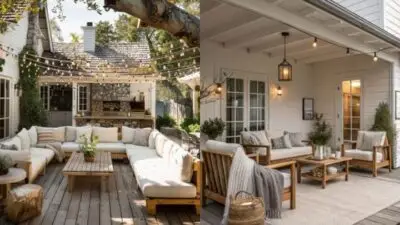Bungalows hold a special place in architectural history, known for their simple, functional design and charming aesthetic. Whether nestled in the rolling hills of the countryside or tucked into a bustling neighborhood, these homes exude a quaint charm that is both timeless and captivating. For anyone considering enhancing their home’s curb appeal, focusing on the exterior design of a bungalow can offer a blend of classic styles with modern updates.
The architectural features of bungalows, including low-pitched roofs and overhanging eaves, lend themselves well to various design enhancements. You can explore an array of creative possibilities from warm, earthy palettes to more adventurous color schemes that reflect your personal style. Capturing the essence of a bungalow’s charm can be as simple as adding shutters, decorative brackets, or a vibrant front door to create a welcoming facade.
Maintenance is key to preserving the natural appeal of a bungalow exterior. Regular upkeep ensures lasting beauty and longevity, making your home inviting for years to come. Explore different ways to marry historical influences with contemporary design, ensuring your bungalow remains a standout in any neighborhood.
Position the bar away from prevailing winds and install retractable screens or curtains for additional weather protection. Include electrical outlets with weatherproof covers for blenders and other bar equipment.
Key Takeaways
- Bungalow design blends classic styles with modern updates.
- Personalization can enhance a bungalow’s architectural charm.
- Regular maintenance is essential for lasting curb appeal.

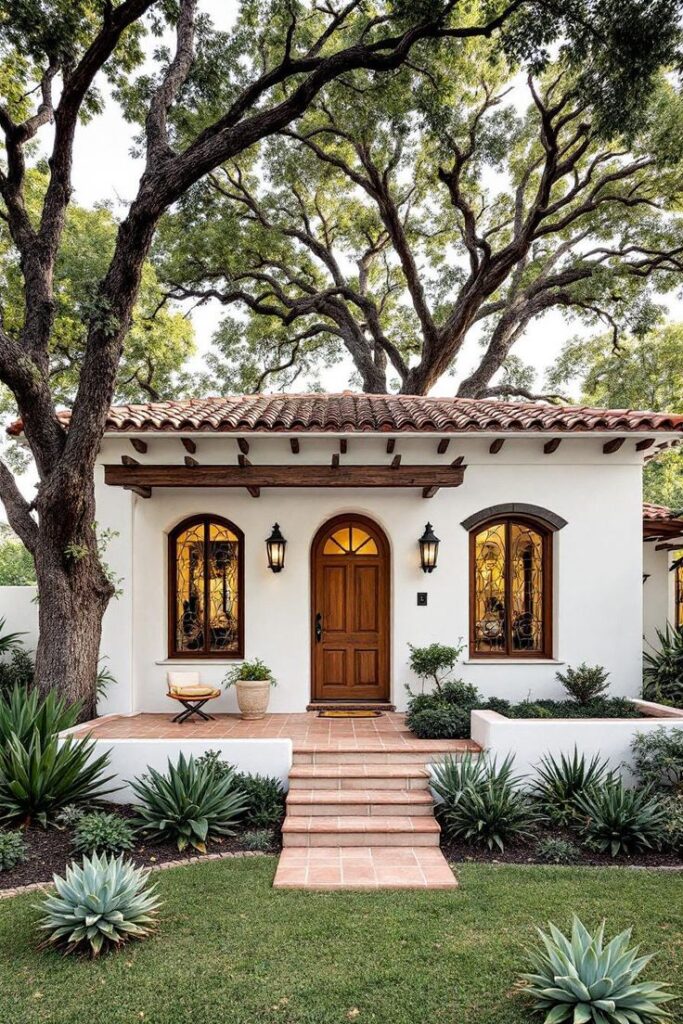
Historical Context of Bungalows
Bungalows have a rich and varied history. Their origins trace back to the Bengal region of South Asia in the early 18th century, where they were first constructed as simple, one-story homes. The term “bungalow” itself is derived from the Hindi word “bangala,” reflecting its roots in India.
The style gained popularity in the mid-19th century when the British adapted these homes for their own use in India. These structures were valued for their practicality and ease of construction, serving as informal rest houses for colonials.
In the early 20th century, bungalows became popular in the United States, with the California Bungalow emerging as a distinct style. Influenced by both American tastes and the Arts & Crafts movement, these homes typically featured low-pitched roofs, wide verandas, and the use of natural materials.
The design elements of California Bungalows emphasized simplicity and craftsmanship, resonating with those seeking an escape from the more ornate Victorian architecture. The use of materials like wood siding, often clapboard or cedar, contributed to a warm and inviting exterior.
The bungalow style continues to be loved for its charm and practicality. Its historical journey from South Asia to Western popularity illustrates how cultural exchange can influence architectural trends. Whether bungalow or California Bungalow, this style encapsulates a desire for simplicity and a connection to nature, both of which remain relevant in modern housing preferences.
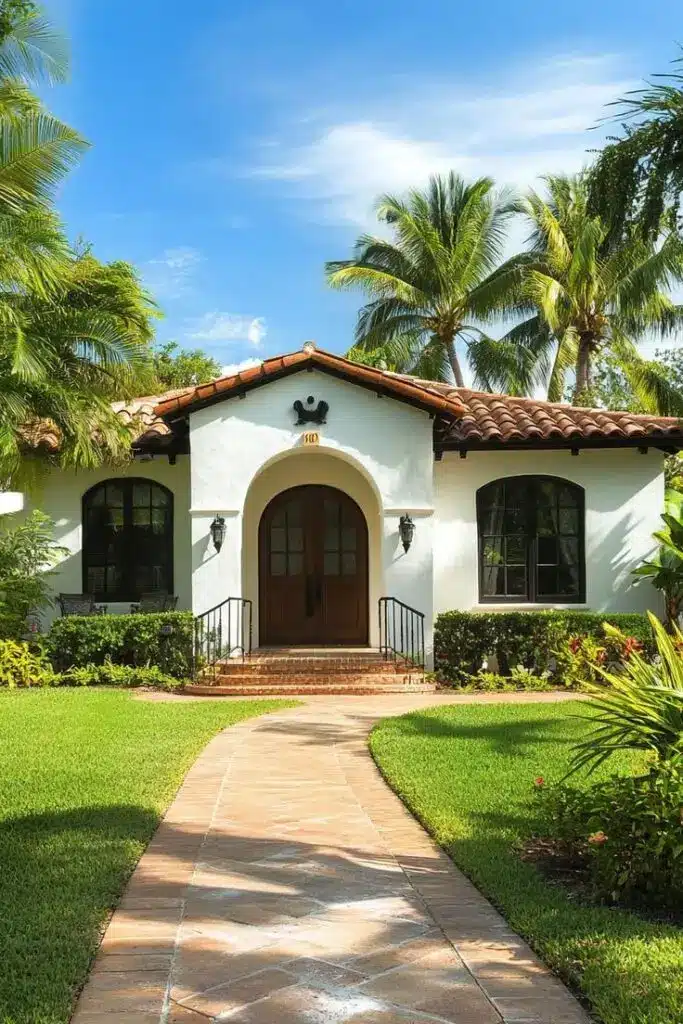

Architectural Features of Bungalows
Bungalow architecture is characterized by its unique and distinctive elements. These features combine to create a harmonious, inviting, and functional exterior that reflects both simplicity and charm.
Exterior Materials and Textures
Bungalows often feature a mix of natural materials. You’ll find wood siding, shingles, stone, and stucco are commonly used for a warm and earthy appearance. These materials not only provide visual appeal but also enhance the structural integrity. The exterior sometimes combines different textures, with smooth stonework complementing rough-hewn wood.
Stone foundations or trim are coupled with wooden accents to highlight the architectural style. Stucco is another favorite, offering both durability and ease of maintenance. This variety in materials ensures that bungalows remain both aesthetically pleasing and practical over time.
Roof Design and Materials
The roof is a defining element, showcasing steep pitches and broad overhangs that provide shelter and shade. Gabled roofs are frequently seen, often adorned with wide, exposed rafters. This not only adds architectural interest but also facilitates airflow and insulation.
Shingled roofs, particularly those made of wooden shingles, contribute to the rustic character. You might also observe decorative details like dormer windows, which add charm and increase natural light in attic spaces. These thoughtful choices in roof design ensure both beauty and functionality in bungalow homes.
Porch Layout and Functionality
A front porch is a quintessential feature, acting as a welcoming transition between outdoors and indoors. It’s typically a spacious area, perfect for relaxation and social gatherings. Most porches include square posts supporting a substantial roof, creating a sense of protection and comfort.
The layout often includes seamless integration with the front door, providing easy access and an inviting entry point. Some bungalows may feature a small outdoor fireplace for added warmth. The porch design not only elevates the home’s appeal but also enhances usability year-round, promoting interaction with nature and neighbors.
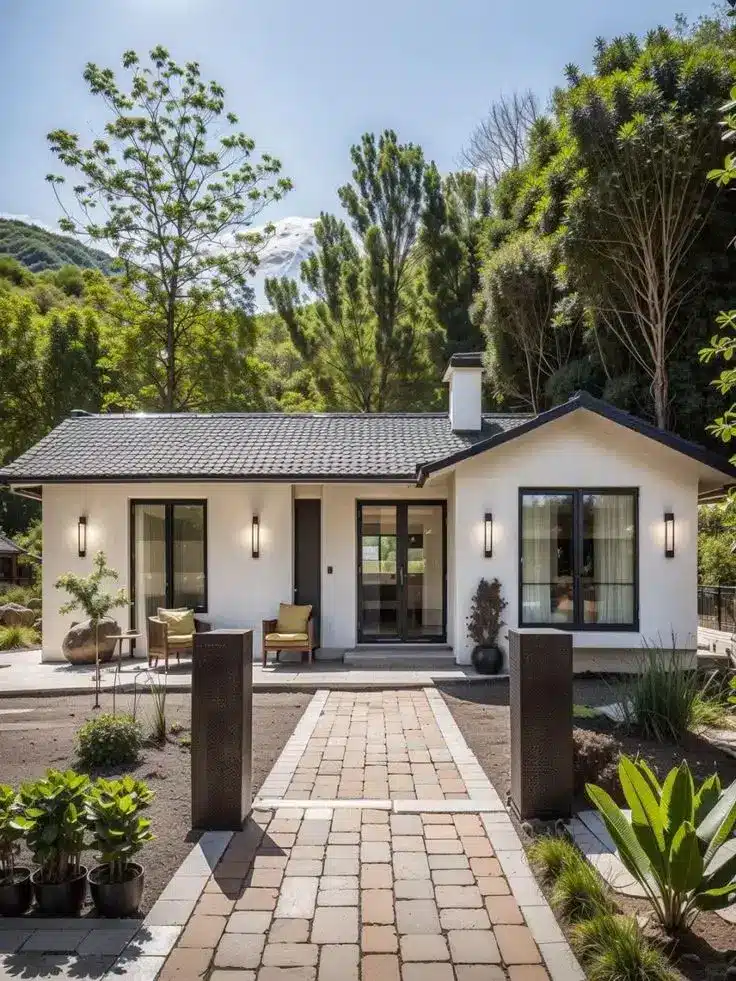
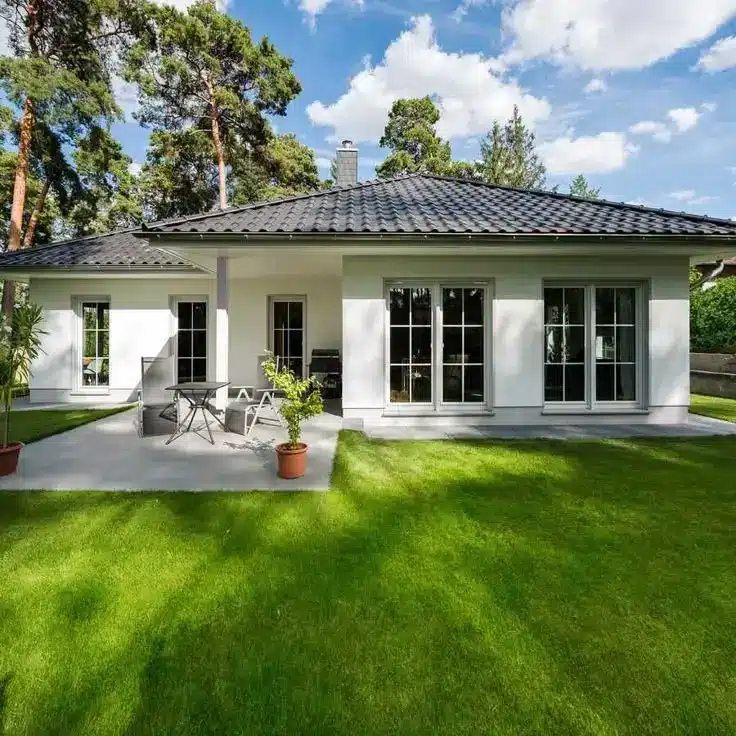
Design Elements for Curb Appeal
Enhancing a bungalow’s curb appeal involves thoughtful landscaping, striking front door features, and effective lighting strategies. Each element contributes to a welcoming and visually appealing exterior, making your home stand out.
Landscaping and Garden Design
A well-designed garden can greatly enhance the curb appeal of your bungalow. Focus on creating balance and symmetry with plant selection. Group ornamental grasses or flowering plants to fill spaces naturally, framing your home and enhancing its features.
Include structural elements like small fences or garden borders. These can provide definition and structure. Regular lawn care, such as mowing and edging, keeps the yard neat. Consider mixing colors and textures through varied plant species. This approach aids in maintaining an engaging and cohesive outdoor space year-round.
Front Door Features
The front door serves as a focal point for your bungalow’s exterior. Choose a bold color to create a striking visual impact. High-quality hardware, like a modern lockset or ornate handle, adds sophistication. Consider updating your house numbers to match the door’s style or add a unique touch with a stylish wall-mounted mailbox.
A porch area can be enhanced with potted plants or decorative seating, creating a welcoming space. Pay attention to seasonal decor options, such as wreaths or stones, which can add charm and character. Your front door can be the centerpiece of your exterior when these elements are combined thoughtfully.
Exterior Lighting Strategies
Effective lighting increases both curb appeal and safety. Install wall-mounted light fixtures flanking your front door to ensure visibility and aesthetic appeal. A porch light offers a warm glow, inviting guests inside. Consider accent lighting to highlight landscape features, such as trees or garden paths, enhancing depth after dusk.
Utilize energy-efficient options like LED lights. These provide long-lasting and cost-effective illumination. Motion sensors can increase security, reducing energy waste. Try path lights to guide visitors safely and create a welcoming atmosphere. Thoughtful lighting both elevates your bungalow’s charm and ensures practicality year-round.


Customizing Your Bungalow Exterior
When customizing your bungalow exterior, consider the role of color schemes, accent pieces, and essential renovation considerations. Each area offers unique ways to enhance the charm of your home.
Color Schemes and Paint Options
Choosing the right color scheme can significantly influence the ambiance and curb appeal of your bungalow. Subtle shades of earth tones or muted pastels are popular choices for blending with natural surroundings.
For a striking impression, bold colors can highlight architectural details. The front door, often a focal point, might be painted in a contrasting hue to add character and warmth. Combine several complementary colors for a cohesive look. Exterior paints should be durable and weather-resistant to withstand the elements.
- Neutrals: Timeless and versatile
- Pastels: Soft and inviting
- Bold tones: Strong and eye-catching
Accent Pieces and Decor
Accent pieces complement the exterior design. Consider adding porch furniture, such as a comfortable bench or rocking chairs, to create an inviting entrance. Window boxes filled with seasonal flowers can add a splash of color and warmth.
Upload vintage outdoor lighting fixtures to illuminate the walkway or porch area. Use decorative elements like a unique mailbox, plant pots, or metal sculptures to enhance character. Consider symmetry and balance when placing these objects to create a harmonious exterior.
- Furniture: Benches, rocking chairs
- Lighting: Vintage fixtures
- Decor: Unique mailboxes, metal sculptures
Renovation Considerations
When planning renovations, prioritize both aesthetic and functional improvements. Replacing old windows with energy-efficient options can enhance comfort and reduce energy costs. Upgrading the siding with materials such as reclaimed wood or modern composites can blend sustainability with style.
Pay attention to structural integrity, especially on elements like the porch, which may need additional support. Keep a consistent design theme in mind to ensure the exterior remains cohesive. Consulting with a professional designer can provide additional insight into creating a visually appealing and practical renovation plan.
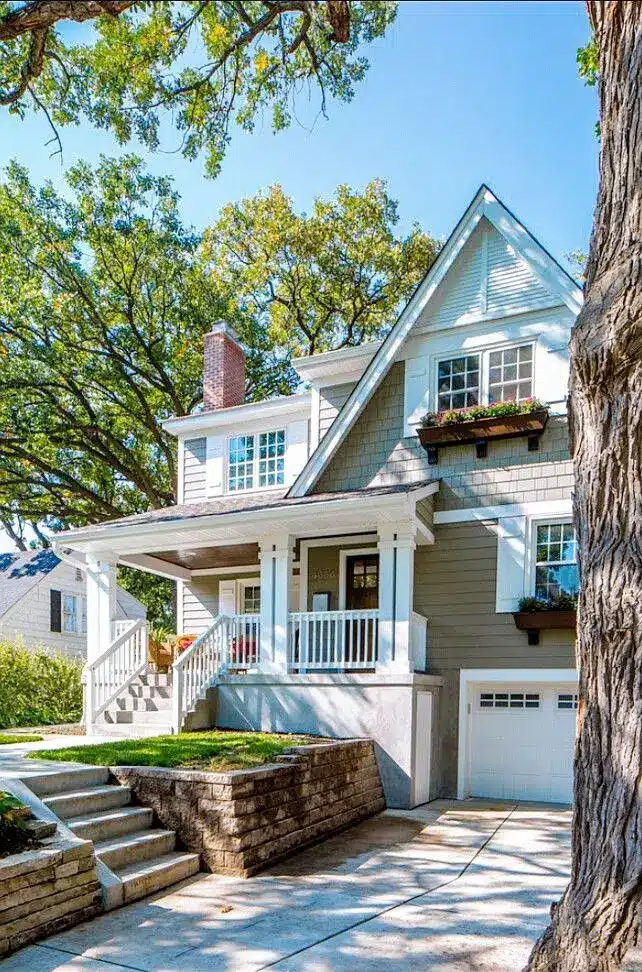

Visual Showcase of Bungalow Exteriors
A well-curated visual showcase can significantly enhance your appreciation for bungalow exteriors. By utilizing tools like photo galleries, panoramic images, and stock visuals, you gain a deeper insight into design possibilities.
Using Photo Galleries for Inspiration
Browsing photo galleries dedicated to bungalow exteriors can spark new ideas for your next project. They offer an array of styles, incorporating varying architectural features from vintage to modern designs. When exploring these galleries, focus on details such as color schemes, roof styles, and landscaping that complement the home’s structure.
Photo galleries are often categorized by specific themes or styles, making it easy to navigate through various options. By examining high-quality images, you can better visualize how different elements come together to complete a cohesive look.
Incorporating 360° Panoramic Images
The use of 360° panoramic images provides a comprehensive view of bungalow exteriors, allowing you to experience the space from multiple angles. These immersive visuals not only showcase the front façade but also provide context with the surrounding environment.
Look for panoramic tours that highlight key aspects like the integration of outdoor spaces or the impact of natural lighting. This format aids in assessing scale, proportions, and design harmony. When available, virtual reality options enhance exploration, offering an interactive perspective on potentially overlooked features.
Finding Quality Stock Photos and Vectors
Accessing a broad range of stock photos and vectors offers additional design resources. These visuals serve as valuable references for those seeking to replicate certain architectural elements or experiment with custom adaptations.
Choose stock images that reflect the style you’re aiming to achieve. Websites like Shutterstock provide curated collections, ensuring quality and relevance. Select visuals that focus on unique design aspects such as entryways, windows, and materials, enhancing your understanding of varied architectural expressions.
Video Tours and Presentations
Video tours and presentations offer a dynamic approach to viewing bungalow exteriors, capturing details in motion. They are particularly useful for showcasing changes in perspective and lighting throughout the day.
When available, these video formats allow you to observe craftsmanship and design intricacies that static images may not fully convey. Video tours often include narration or text overlays, providing context about design choices and construction techniques, enriching your knowledge of bungalow architecture through a multisensory experience.

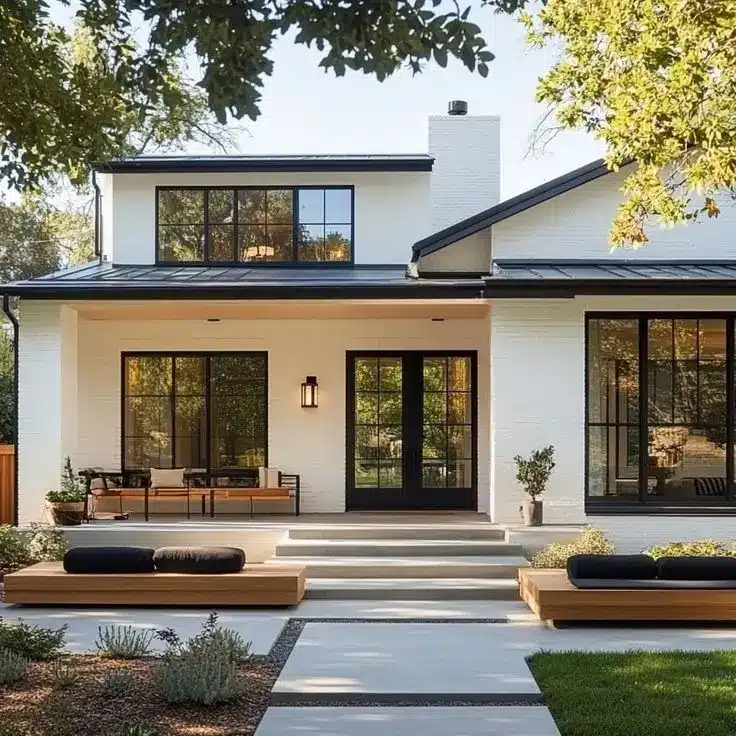
Maintenance Tips and Best Practices
Maintaining a bungalow’s exterior involves a focus on regular cleaning, seasonal strategies, and long-term care. Attending to these areas ensures your home remains attractive and functional.
Regular Cleaning and Repairs
Start by cleaning your bungalow’s exterior surfaces like walls, windows, and light fixtures. Use mild detergents and soft brushes to safeguard finishes. Address any visible damage promptly. Check for cracks or chips in paint and make small repairs. Regular inspections help catch these issues.
Inspect your porch and light fixtures for signs of wear. Clean any debris from around your bungalow’s foundation to prevent moisture-related problems. A proactive approach prevents minor issues from turning into costly repairs. Replacing damaged or outdated features helps maintain visual appeal and increases longevity.
Seasonal Upkeep Strategies
Adapt your maintenance efforts to the changing seasons. In spring and summer, focus on clearing away any accumulated debris. This includes clearing gutters and trimming overgrown bushes near the porch and walkway.
Fall requires safeguarding against winter conditions. Ensure exterior paint is intact to protect your bungalow from moisture during chilly months. Check the stability of light fixtures and clear pathways of leaves to avoid hazards. In winter, regularly remove snow from your porch and steps for safety.
Long-Term Preservation Techniques
Investing in quality materials for repairs can significantly extend the life of your bungalow’s exterior. Choose high-grade paint and weather-resistant fixtures. This small change can result in long-term savings by minimizing repeated maintenance.
Regularly plan for professional inspections to identify wear and areas needing attention. These inspections can guide your maintenance planning effectively. Consider sustainable practices, such as using eco-friendly products, to protect both your home and the environment. Prioritizing sustainability enhances the aesthetic and functional longevity of your bungalow.
- 383shares
- Facebook0
- Pinterest383
- Twitter0


